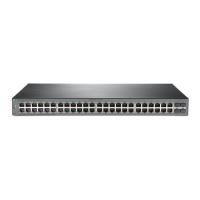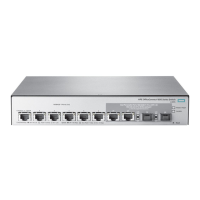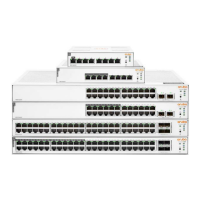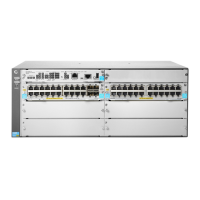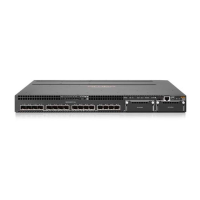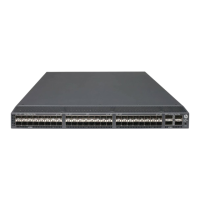135
g. Enable the session-control feature.
2. Configure an ISP domain on the switch:
a. From the navigation tree, select Security > Authentication > ISP Domains.
b. Add ISP domain dm1, and set the domain state to Active.
c. Set the access service to Portal.
d. Configure the ISP domain to use RADIUS scheme rs1 for authentication, authorization, and
accounting of portal users.
e. Click the Advanced settings icon on the ISP Domain page.
f. Specify dm1 as the default ISP domain. If a user enters the username without the ISP
domain name at login, the authentication and accounting methods of the default domain are
used for the user.
3. Configure the VLAN and the VLAN interface on Switch A:
a. From the navigation tree, select Network > Links > VLAN.
b. Create VLAN 100.
c. Open the details page for VLAN 100.
d. Create VLAN-interface 100 and assign IP address 2.2.2.1 to it.
4. Configure portal authentication on the switch:
a. From the navigation tree, select Security > Access Control > Portal.
b. Add a portal Web server:
− Specify the server name as newpt.
− Specify the URL as http://2.2.2.1:2331/portal.
The URL can be the IP address of the interface enabled with portal authentication or a
loopback interface's address other than 127.0.0.1.
c. Add a local portal Web server:
− Select HTTP.
− Select the default logon page abc.zip.
The default logon page file must have existed in the root directory of the switch's storage
medium.
− Set the TCP port to 2331.
d. Add an interf
ace policy:
− Select interface VLAN-interface 100.
− In the IPv4 configuration area, enable portal authentication and select the Direct
method.
− Select portal Web server newpt.
5. Configure the RADIUS server:
a. Add a user account on the server. (Details not shown.)
b. Configure the authentication, authorization, and accounting settings. (Details not shown.)
Verifying the configuration
1. From the navigation tree, select Security > Authentication > RADIUS.
2. Verify the configuration of RADIUS scheme rs1.
3. From the navigation tree, select Security > Authentication > ISP Domains.
4. Verify the configuration of ISP domain dm1.
5. Use the configured user account to pass portal authentication.
6. From the navigation tree, select Security > Access Control > Portal.
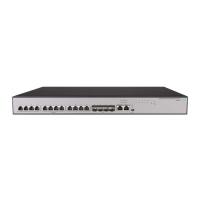
